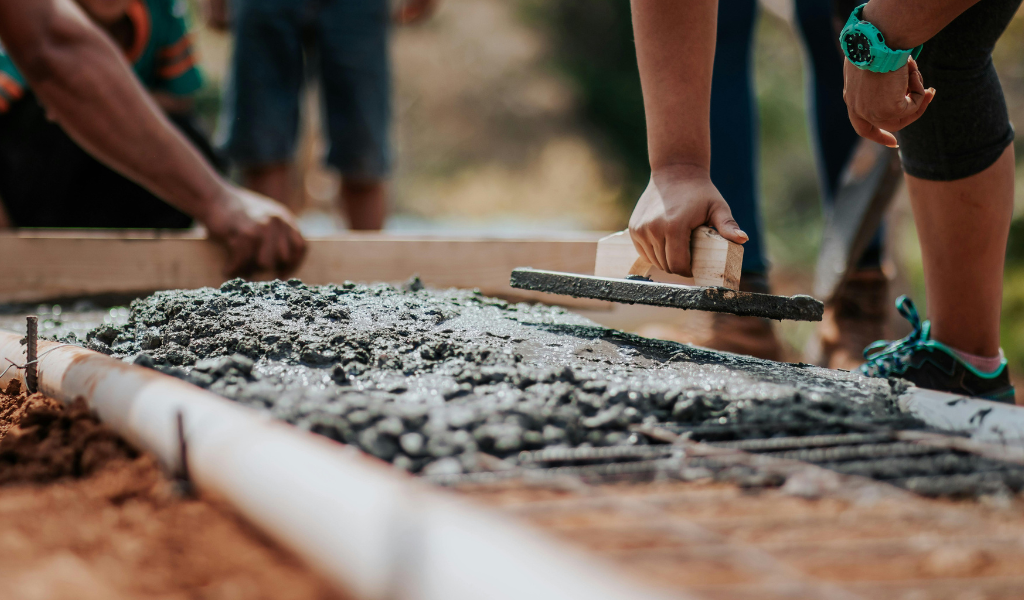How To Avoid Delays And Disputes On The Building Site
24 November 2025
5 Mins Read

Taking a building from that first sketch on a scrap of paper all the way to a finished structure takes planning, coordination, and—let’s be honest—more patience than most of us wake up with.
And even when everyone’s trying their best, delays and little disputes somehow wiggle their way in.
A missed call, a late delivery, or some instruction that wasn’t quite as clear as you thought can often lead to major problems.
Moreover, all these tiny things add up. And once time starts slipping, money follows.
The upside? Most of these hiccups can actually be avoided if you set things up properly from the very beginning.
So if you’re about to start a new project—or already knee-deep in mud and scaffolding—here’s how to keep the whole thing on track and avoid the usual site drama.
Investing in real estate often requires substantial capital and effective collaboration with a large number of people. Thus, it becomes very important to have adequate construction planning.
Moreover, proper construction planning allows the initiators of a construction to ensure that their work remains smooth in the future. Proper planning prevents mishaps from occurring.
Therefore, it also ensures that all parties can reach a consensus on the relevant decisions. Thus, clarity in the minds of programme initiators prevents future misunderstandings.
How To Use Proper Construction Planning To Avoid Disputes In The Future?
Proper construction planning can remove disputes in the future in multiple ways. Learn how to initiate it effectively and then properly execute it.
1. Start With Clear Plans And Agreements
Honestly, most site problems happen long before anyone shows up with a drill. It’s usually the planning stage where things get fuzzy.
When drawings are vague or agreements are “sort of” understood, people start guessing… and guessing is rarely anyone’s strong suit.
The best thing you can do is get solid drawings, clear specs, and proper written agreements sorted right away—no “we’ll figure it out later,” because that never ends well.
A proper contract (yes, an actual written one) is essential. Verbal promises sound nice in the moment, but get forgotten, misheard, twisted—pick your disaster.
The contract should spell out the work, timelines, payments, and how changes will be handled. If it isn’t written down, someone will swear it meant something else.
Adding a quick mediation clause doesn’t hurt either; it keeps everyone calm if something does go sideways.
And the small things matter more than people think. Like, if the job includes suspended ceiling tiles, list the exact brand and model—not just “tiles.”
Sounds picky, but trust me, it prevents those “I thought you meant…” arguments later. Nailing these details early saves more headaches than you’d expect.
Verbal agreements do not constitute a valid guarantee. Thus, proper construction planning should always be accompanied by a written legal agreement to avoid future miscommunication.
When all parties, including suppliers, builders, and clients, fully understand what is being built, they can better cater to the needs and requirements of the construction.
2. Keep Communication Open And Regular
Communication is basically the oxygen of a building site. When it dries up, mistakes start popping up everywhere.
And funny enough, those tiny mistakes? They’re the ones that snowball into those big delays no one sees coming.
Staying in regular contact with everyone—subs, suppliers, whoever’s involved—helps keep the whole operation running smoothly.
Weekly site meetings (quick ones, not those endless ones) make a huge difference.
People should also feel okay speaking up when something looks off. If a joiner notices materials are short or a plumber spots a mismatch in the plans, you want them to mention it early.
Early problems mean easy fixes. On the other hand, silence means expensive surprises. Even small daily updates help.
Therefore, a couple of notes, maybe a photo or two, can provide you with a record of what’s happening without relying on anyone’s memory.
And don’t assume everyone views instructions the same way. Something that sounds totally clear to you might not land the same with someone else.
When you discuss anything important, sending a fast email summary isn’t overkill—it’s self-preservation.
3. Manage The Schedule Realistically
Nothing stirs tension faster than a too-tight schedule. Everyone wants a quick build (who doesn’t?), but rushing usually leads to mistakes, do-overs, and a lot of sighing.
A realistic schedule takes into account factors such as weather, delivery times, holiday seasons, and time-consuming tasks.
Moreover, the fact remains that some tasks take longer than you think. It’s way better to be upfront than to promise the moon and spend the next three months apologizing.
Build in buffer time. Something will run late—I’d bet on it. A truck gets delayed, a drawing changes at the last minute, someone’s sick… stuff happens.
A little breathing room keeps the timeline from exploding the moment something slips. And when it does slip, update the schedule right away and tell everyone.
Don’t just hope it “works itself out.” It never does.
Shared timelines help a lot, too. Plenty of builders use simple online tools so each trade knows when they’re needed. It stops those awkward “uh, why are you both in this room right now?” moments and reduces people waiting around doing nothing.
Keep Quality And Safety A Priority
A lot of delays and disputes boil down to poor workmanship or safety issues. Cutting corners might save an hour now, but it usually costs days later.
Keeping quality at the front of everyone’s mind helps keep things moving.
Make sure each trade knows the standard expected—and checks their own work, not just hopes no one notices.
Safety matters just as much. One accident can shut the site down, and that’s pretty much the worst kind of delay.
Regular toolbox chats and quick walk-throughs help keep everyone awake to potential risks. A tidy site also makes a difference.
Tools everywhere, materials piled randomly… that’s basically an accident audition.
And build quality checks right into the schedule. Catching a problem early is way easier than discovering it at the end, when fixing it means tearing half the job apart. If something’s wrong, fix it then—not later, not “after lunch,” not “eh, it’ll be fine.”
Maintaining decent standards keeps your reputation intact and keeps the project rolling without those nasty last-minute surprises.

















